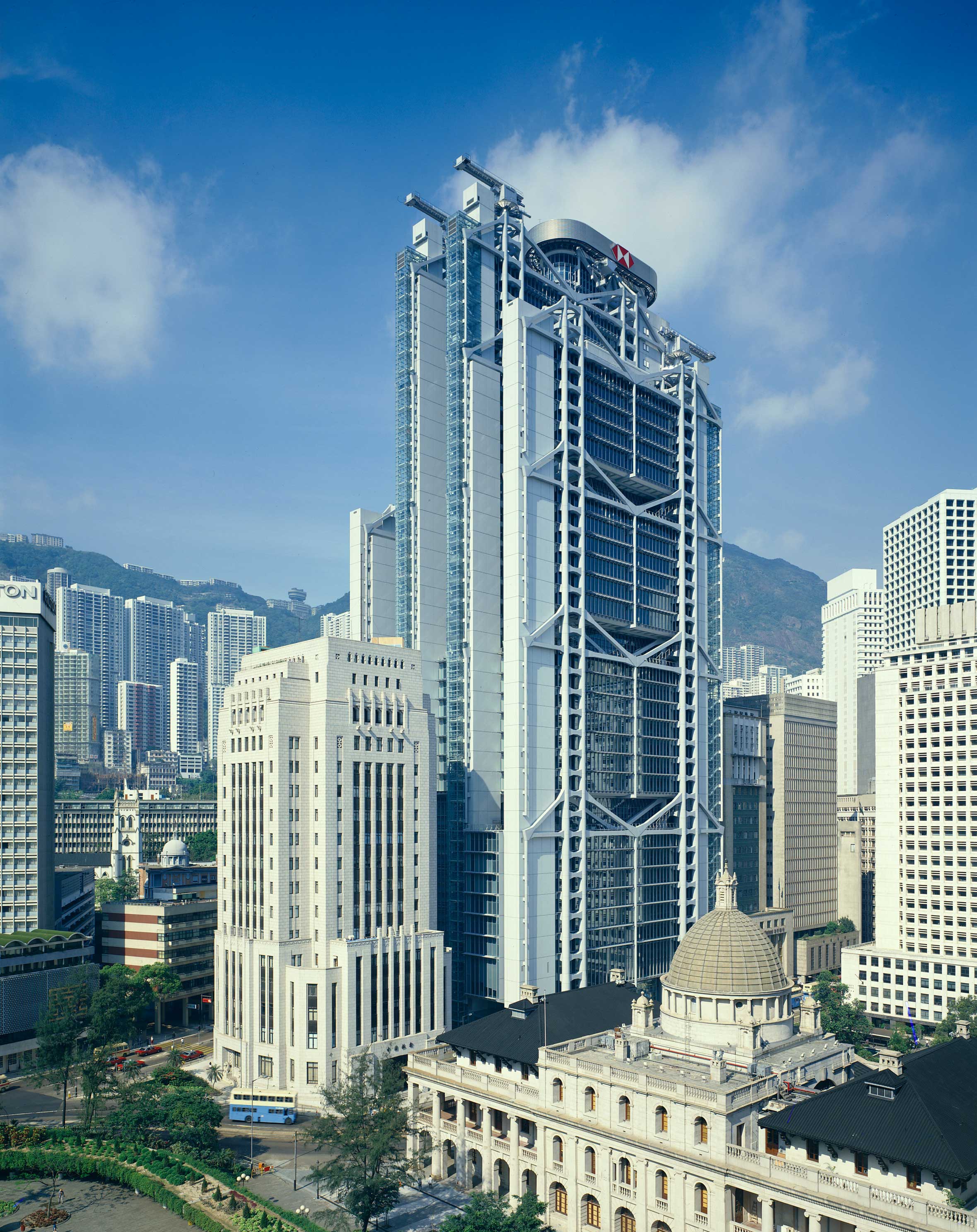High-tech architecture
'High-tech' is an architectural style that incorporates elements of the new high-tech industries and advanced construction techniques into building design. Also known as 'late modernism' or 'structural expressionism', it emerged in the 1970s as a response to a growing disillusionment with modern architecture that was felt to have produced monotonous, standardised structures.
High-tech often seen as being the link between modernism and postmodernism. Developed out of modernism, high-tech attached importance to the object itself rather than the object being a functional use of space. It aimed to achieve a new industrial aesthetic, inspired by technological progress and the computerisation of industry.
It sought to integrate the technical equipment of the building into its structure, marrying functionality with its aesthetics. This would be taken further by architects such as Richard Rogers on buildings such as Lloyds of London and the Centre Pompidou in a style that was sometimes referred to as 'bowellism', based on the idea that the greatest amount of free floor space could be maintained by externalising building services.
Some of the most well-known architects identified with the high-tech style are Norman Foster, Richard Rogers, Renzo Piano, Michael Hopkins, and Jean Nouvel.
Some of the most well-known examples of high-tech buildings are:
- City Hall, London.
- Bank of China Tower.
- Lloyds of London.
- Allianz Arena, Munich.
- Centre Pompidou.
- Beetham Tower, Manchester.
- Internationales Congress Centrum, Berlin.
- HSBC Headquarters, Hong Kong.
- Listing of Sainsbury's supermarket in Camden Town.
- Channel Four Television Headquarters.
- Schlumberger Research Laboratories, Cambridge.
- Renault parts distribution centre, Swindon.
- Grand Union Walk housing, London.
- TV-am building, Camden.
[edit] Related articles on Designing Buildings Wiki
- Architectural styles.
- Art Nouveau.
- Bank of China Tower.
- Blobitecture.
- Brutalism.
- Centre Pompidou.
- Concept architectural design.
- Constructivist architecture.
- Deconstructivism.
- Expressionist architecture.
- Fuji TV Building, Tokyo.
- Futurist architecture.
- International Style.
- Italian brutalism.
- Last Futures: Nature, Technology and the End of Architecture.
- Megastructure.
- Metabolism.
- Modernist architecture.
- Neo-futurism.
- Nicholas Grimshaw.
- Norman Foster.
- Parametricism.
- Postmodern architecture.
- Richard Rogers.
- Sage Gateshead.
- Speculative architecture.
[edit] External references
- MLJ - High-tech architecture
Featured articles and news
Homes England creates largest housing-led site in the North
Successful, 34 hectare land acquisition with the residential allocation now completed.
Scottish apprenticeship training proposals
General support although better accountability and transparency is sought.
The history of building regulations
A story of belated action in response to crisis.
Moisture, fire safety and emerging trends in living walls
How wet is your wall?
Current policy explained and newly published consultation by the UK and Welsh Governments.
British architecture 1919–39. Book review.
Conservation of listed prefabs in Moseley.
Energy industry calls for urgent reform.
Heritage staff wellbeing at work survey.
A five minute introduction.
50th Golden anniversary ECA Edmundson apprentice award
Showcasing the very best electrotechnical and engineering services for half a century.
Welsh government consults on HRBs and reg changes
Seeking feedback on a new regulatory regime and a broad range of issues.
CIOB Client Guide (2nd edition) March 2025
Free download covering statutory dutyholder roles under the Building Safety Act and much more.
Minister quizzed, as responsibility transfers to MHCLG and BSR publishes new building control guidance.
UK environmental regulations reform 2025
Amid wider new approaches to ensure regulators and regulation support growth.
BSRIA Statutory Compliance Inspection Checklist
BG80/2025 now significantly updated to include requirements related to important changes in legislation.























